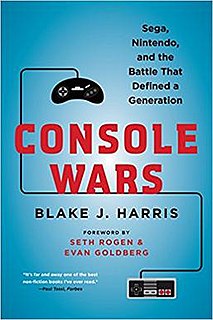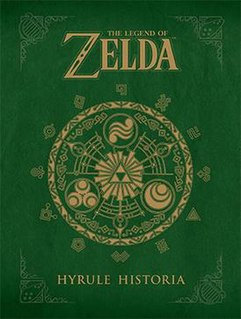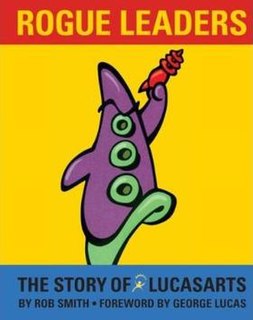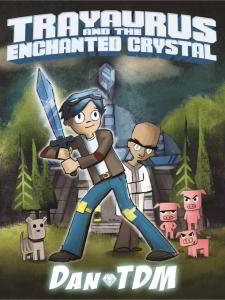 W
W1001 Video Games You Must Play Before You Die is a video game reference book first published in October 2010. It consists of a list of video games released between 1970 and 2013, arranged chronologically by release date. Each entry in the list is accompanied by a short essay written by a video game critic, with some entries accompanied by screen shots. It was edited by Tony Mott, longtime editor of Edge magazine. The book's preface was written by video game designer Peter Molyneux.
 W
WThe Art of Computer Game Design by Chris Crawford is the first book devoted to the theory of computer and video games. The book attempts to categorize computer games and talks about design precepts that serve as guidelines for game designers. It was originally published in Berkeley, California by McGraw-Hill/Osborne Media in 1984. The original edition is now out-of-print but from 1997 became available as a free download from a site maintained by Washington State University, Pullman. In 2011 the free download was removed and the text is currently available as a Kindle e-book.
 W
WBASIC Computer Games is a compilation of type-in computer games in the BASIC programming language collected by David H. Ahl. Some of the games were written or modified by Ahl as well. Among its better-known games are Hamurabi and Super Star Trek.
 W
WBlue Wizard Is About To Die!: Prose, Poems, and Emoto-Versatronic Expressionist Pieces About Video Games (1980-2003) is a volume of verse written by Seth Flynn Barkan in 2003; the title is a phrase heard in the arcade game Gauntlet II. It is reputedly the first volume of poetry dedicated to computer and video games. In part because of its uniqueness and because of reviews in a number of periodicals both in and out of the gaming world, Blue Wizard Is About To Die! "sold more than 5,000 copies internationally, making it one of the best-selling poetry collections of 2004."
 W
WThe Book of Adventure Games is a book by Kim Schuette published in 1984 by Arrays, Inc.
 W
WThe Book of Games Volume 1 is a game compendium by gameXplore, examining 150 video games from 2005 through 2006 covering most of the current game platforms. It covers topics such as the future of games, game heroes, from games to movies, and research on games.
 W
WThe Book of Games Volume 2 is a game compendium by gameXplore, examining 100 video games from November 2006 through November 2007 covering most of the current game platforms. It covers topics such as Hardcore Gaming, LAN Events, Indie Game Development, Videogames as Art, Music in Games, Professional Gamers, Future of Games, etc. It contains interviews with Tony Hawk, Rob Pardo, Al Lowe, Jun Takeuchi and Petter Solberg.
 W
WChris Crawford on Game Design (ISBN 0-13-146099-4) is a book about computer and video game design by Chris Crawford. Although referred to as the second edition of The Art of Computer Game Design, it is in fact a completely new book. It was published by Peachpit under the New Riders imprint in 2003. It includes Crawford's response to recent game developments, such as The Sims, and dedicates a chapter to each of his first 14 published games: Tanktics, Legionnaire, Wizard, Energy Czar, Scram, Eastern Front (1941), Gossip, Excalibur, Balance of Power, Patton Versus Rommel, Siboot, The Global Dilemma: Guns & Butter, Balance of the Planet and Patton Strikes Back.
 W
WConsole Wars: Sega, Nintendo, and the Battle That Defined a Generation is a 2014 non-fiction novel written by Blake J. Harris. It follows businessman Tom Kalinske in his venture as CEO of video game company Sega of America, and details the history of the fierce business competition between Sega and Nintendo throughout the 1990s as well as the internal conflicts that took place between Sega of America and Sega of Japan. Harris wrote the book in the style of a novel by compiling several interviews with people who were involved with the events, using the information gathered to create a dramatic interpretation of the events. A documentary of the book directed by Harris and Jonah Tulis was released on CBS All Access on September 23, 2020. A miniseries adaptation is in development with Seth Rogen and Evan Goldberg executive producing with Jordan Vogt-Roberts directing.
 W
WCrash Override: How Gamergate (Nearly) Destroyed My Life, and How We Can Win the Fight Against Online Hate is a book-length memoir by indie video game developer Zoë Quinn about their experiences as the target of Gamergate and in countering online abuse.
 W
WDesigning Virtual Worlds is a book about the practice of virtual world development by Richard Bartle. It has been noted as an authoritative source regarding the history of world-based online games. College courses have been taught using it.
 W
WEmpires of Eve: A History of the Great Wars of Eve is a book by journalist Andrew Groen about the online game Eve Online. Groen wrote the book to explore the immersion in a relatively-niche game shared by its 50,000 players. Groen's book illustrates the in-universe aspect of the game.
 W
WEverything Bad Is Good for You: How Today's Popular Culture Is Actually Making Us Smarter is a non-fiction book written by Steven Johnson. Published in 2005, it details Johnson's theory that popular culture – in particular television programs and video games – has grown more complex and demanding over time and is making society as a whole more intelligent, contrary to the perception that modern electronic media are harmful or unconstructive. The book's claims, especially related to the proposed benefits of television, drew media attention. It received mixed critical reviews.
 W
WGame Design Workshop, 3rd Edition: A Playcentric Approach to Creating Innovative Games is a book on game design by Tracy Fullerton, originally published by CMP Books in 2004. It has been updated and released in two subsequent editions, the latest by AK Peters/CRC Press in 2014.
 W
WGame Over: How Nintendo Zapped an American Industry, Captured Your Dollars, and Enslaved Your Children is a non-fiction book written by David Sheff and published by Random House, New York in 1993.
 W
WGrand Theft Childhood: The Surprising Truth About Violent Video Games and What Parents Can Do is a book by Lawrence Kutner and Cheryl K. Olson. Along with psychiatrist Eugene V. Beresin, Kutner and Olson are co-directors of the Harvard Medical School Center for Mental Health and Media, a division of the department of psychiatry at Massachusetts General Hospital.
 W
WJacked: The Outlaw Story of Grand Theft Auto is a 2012 book by David Kushner that describes the history of Grand Theft Auto and its founders Sam Houser and Dan Houser. It describes some of the controversies that the game went through, such as fights with Jack Thompson, its continual attempts to push up against societal limits, and the attempt to cover up the Hot Coffee mod in the release of GTA: San Andreas.
 W
WThe Legend of Zelda: Hyrule Historia is a collector's book about Nintendo's The Legend of Zelda series, published in English by Dark Horse Comics and in German by Tokyopop. The 276-page book reveals the official timeline of the fictional events in the series, following years of speculation by fans. The book also includes artwork for the games, a short manga, and a foreword and afterword written by the series' producers.
 W
WMasters of Doom: How Two Guys Created an Empire and Transformed Pop Culture is a 2003 book by David Kushner about id Software and its influence on popular culture, focusing chiefly on the video-game company's co-founders John Carmack and John Romero.
 W
WMinecraft: The Unlikely Tale of Markus "Notch" Persson and the Game That Changed Everything is a book written by Daniel Goldberg and Linus Larsson about the story of Minecraft and its creator, Markus "Notch" Persson. The book was released on October 17, 2013.
 W
WOnly You Can Save Mankind (1992) is the first novel in the Johnny Maxwell trilogy of children's books and fifth young adult novel by Terry Pratchett, author of the Discworld sequence of books. The following novels in the Johnny Maxwell Trilogy are Johnny and the Dead (1993) and Johnny and the Bomb (1996). The setting of the novels in the modern world was a departure for Pratchett, who writes more regularly in fantasy world settings.
 W
WPhoenix IV: The History of the Videogame Industry is a book written by Leonard Herman. It is the fourth edition of a book that had been previously called Phoenix: The Fall & Rise of Videogames. The original book had been published in December 1994 by Rolenta Press and at the time of its publication, Phoenix was the first-ever comprehensive book about the history of videogames. Two subsequent editions were released: the 2nd edition arrived in 1997 and a 3rd edition was published in 2001. The book has been completely rewritten and the 4th edition was published in November, 2016. In June 2008, Game Informer magazine named Phoenix the second best videogame-related book of all time.
 W
WRacing the Beam: The Atari Video Computer System is a book by Ian Bogost and Nick Montfort describing the history and technical challenges of programming for the Atari 2600 video game console.
 W
WReady Player One is a 2011 science fiction novel, and the debut novel of American author Ernest Cline. The story, set in a dystopia in 2045, follows protagonist Wade Watts on his search for an Easter egg in a worldwide virtual reality game, the discovery of which would lead him to inherit the game creator's fortune. Cline sold the rights to publish the novel in June 2010, in a bidding war to the Crown Publishing Group. The book was published on August 16, 2011. An audiobook was released the same day; it was narrated by Wil Wheaton, who was mentioned briefly in one of the chapters. In 2012, the book received an Alex Award from the Young Adult Library Services Association division of the American Library Association and won the 2011 Prometheus Award. A film adaptation, screenwritten by Cline and Zak Penn and directed by Steven Spielberg, was released on March 29, 2018. A sequel, Ready Player Two, was released on November 24, 2020.
 W
WReady Player Two is a science fiction novel by American author Ernest Cline released in 2020. It is the sequel to his 2011 debut novel Ready Player One. Plans for a Ready Player One sequel were first announced back in 2015, though Cline did not begin writing the book until late 2017. Cline attributes further developments to the critical and financial success of the film adaptation of the first novel. Ready Player Two was published and released on November 24, 2020. It debuted at number one on The New York Times Best Seller list. The novel received a heavily polarized reception. Critics including Germain Lussier at io9 expressed disappointment in the story and writing, saying that it failed to expand in "new and exciting ways" on the original. A film adaptation is in development.
 W
WReplay: The History of Video Games is a book on the history of video games by Tristan Donovan.
 W
WRogue Leaders: The Story of LucasArts is a book about the history of the video game developer and publisher LucasArts, by PlayStation: The Official Magazine's Editor-in-Chief Rob Smith, with a foreword by George Lucas.
 W
WRules of Play: Game Design Fundamentals is a book on game design by Katie Salen and Eric Zimmerman, published by MIT Press.
 W
WSex in Video Games is a nonfiction book by Brenda Romero about the history of human sexual behavior in video games.
 W
WSmartbomb: The Quest for Art, Entertainment, and Big Bucks in the Videogame Revolution is a book written by journalists Heather Chaplin and Aaron Ruby. It was published on November 4, 2005, by Algonquin Books. It is the authors' first book and the work of five years of research.
 W
WTrayaurus and the Enchanted Crystal is the debut graphic novel by YouTuber Daniel Middleton set in the Minecraft franchise, and features characters that have appeared in his videos for All Ages. Commercially, the book was a success, spending three weeks at the top of the list of bestselling books in the world as well as reaching the number one spot on The New York Times Best Seller list for hardcover graphic books in Japan.
 W
WWhat Video Games Have to Teach Us About Learning and Literacy is a book by James Paul Gee that focuses on the learning principles in video games and how these principles can be applied to the K-12 classroom. Video games can be used as tools to challenge players, when they are successful. They motivate players to persevere and simultaneously teach players how to play the game. These games give a glimpse into how one might create new and more powerful ways to learn in schools, communities, and workplaces. Gee began his work in video games by identifying thirty-six learning principles that are present in—but not exclusive to—the design of good video games. He further argues for the application of these principles into the classroom environment. What Video Games Teach Us about Learning and Literacy is a call to educators, teachers, parents and administrators to change the approach to pedagogy.